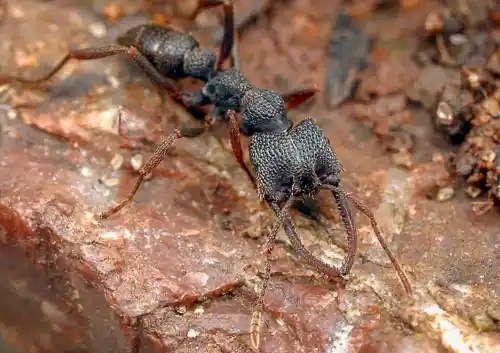Free UK Delivery on orders over £99
Dracula Ant Mystrium camillae
74.99
Introducing the Dracula Ant Mystrium camillae, nature's fascinating marvels brought to life.
Their adaptability spans various climates across Africa, Asia, Australia, and Madagascar. Explore the secrets behind their survival and their vital role in maintaining biodiversity.
The worker ants measure approximately 3-6 mm and have a brown or brick-red colouration. They are covered in short hairs. There is variation in size among the workers, with the smaller ones tending to the brood and the larger ones taking on hunting duties. The queens can be identified by their larger size, measuring around 9-10mm, as well as their distinctive thorax and abdomen.Unravel the mysteries of their diet and nutrition strategies. From hunting centipedes and spiders to consuming hemolymph from their larvae, these ants showcase unique feeding behaviours. The larvae serve as nutrient reserves for the colony and play a crucial role in distributing resources during scarcity. Dracula ants have a preference for a diverse range of food options. Depending on their habitat, they will hunt and consume centipedes with chemical defences, small arthropods, spiders, insect larvae, and even other ants. When it comes to protein, they actively search for various insects like hornworms, tiny mealworms 4-6mm, fruit flies, baby crickets, etc. This wide variety ensures that they maintain a balanced diet, which is crucial for the overall health and growth of the entire colony. They love sweets as well, our ant honey would be just great.
Maintain proper humidity levels and temperature ranges to support their well-being and the production of nutrient-rich hemolymph. It is crucial to maintain a humidity level of 65-80% and a temperature range of 22-26 °C in the nest area, as these conditions are vital for the ants' well-being and the growth of their larvae. You can set the thermostat in the outworld as high as 30°C along with a lower air humidity or around 50-70%.
The larvae play a significant role in producing nutrient-rich hemolymph, which contains essential proteins.

